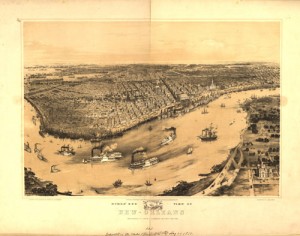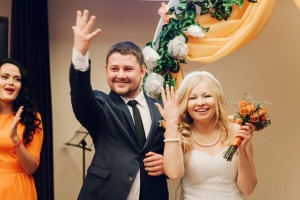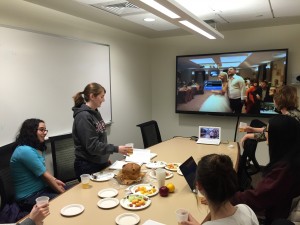This semester the Keck Center Student monitors will be using their time at the front desk to contribute to an ongoing digital humanities project. They will all be reading John Kennedy Toole’s A Confederacy of Dunces and using digital mapping technology to represent all the places mentioned and visited in the novel, which is set in New Orleans.

Using maps in the humanities has risen in popularity lately. At Stanford University their Spatial History Project has used maps to explore Brazilian literature, Chinese migrant railroad workers, Chilean ecological issues, and many other fascinating topics. Here at Colgate, Carolyn Guile of the Department of Art and Art History has used maps to help her students explore historic architecture.
While these projects have been fruitful, their application within a class structure has can be difficult. The steep learning curve required to produce a map can be challenging for students, and take away from the time normally allotted for studying the primary course topic. Given that most mapping platforms are produced for use in other fields, no concise guide of how to use a map for a humanities class has been developed.
The goal of this project is not only to produce a mapped representation of a novel, but to also work out the possible stumbling blocks that could prevent a similar project to be integrated within the class. The aim is to produce the necessary guides and information for faculty and students to engage in a similar endeavor without having to spend hours of class time learning a new technology. The Keck Center will also have the ability to support similar project and trained staff to give technical support as needed.
We will be exploring different platforms, including Google Maps and ArcGIS Online. The student workers will also write about their experience for the Keck Center Blog and newsletter, to explain their own personal feelings about the positives and negatives of the project. By the end of the semester, we hope to provide a comprehensive guide to a humanities-based digital mapping project on the Keck Center web site.




 At the beginning of December 2014 my brother Anton got married and had a wedding reception back in my home city of Perm, Russia. I decided to arrange a skype session between my Intermediate Russian students, the newlyweds and the guests at the wedding reception involving the students in real-life cultural experience.
At the beginning of December 2014 my brother Anton got married and had a wedding reception back in my home city of Perm, Russia. I decided to arrange a skype session between my Intermediate Russian students, the newlyweds and the guests at the wedding reception involving the students in real-life cultural experience.